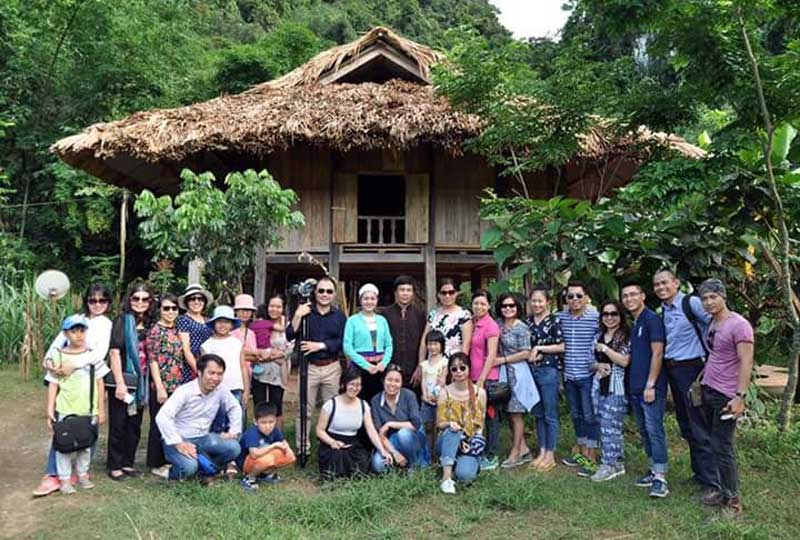


Ngoi Village
(Ngoi Hoa Commune, Tan Lac District) closely locating to the lake, leaning back
on the majestic mountains and silent virgin forest is considered to be one of
the nicest and the most primitive village near the lake of the province. It is
home of Muong ethnic. It still retains the traditional beauty of the old
houses-on-silts. There are many waterfalls and particularly interesting caves
in here, forming the neglected and rare beauty.
The village has
invested 7 standard houses-on-stilts and the local people were also trained the
communal tourism with the different entertainment ways by Hoa Binh Tourism join
Stock Company. The village has become a communal tourism spot meeting the
tourist’s demand such as trekking, immersing in the nature, learning the
cultural life of Muong people, bringing the peaceful and happy holidays in the
charming country and enjoying the clean and delicious products from purely
natural plantation of the local people.

Ngoi
Village (Ngoi Hoa Commune, Tan Lac District) has attracted a lot of visitors
coming to learn and spend their time on the nature and Muong culture.
There are about
80 households living in Ke Commune (Hien Luong Ward, Da Bac). They have kept
the traditional culture of Muong ethnic. Many of them have invested in the
public tourism model and created tourism products to exploit the good cultural
values of Muong people. Tourists come here to discover the mountains,
impressively old forest and vast lake. They also socialize and feel the cultural
life, productive labor of the regional people.
Sung Village
(Cao Son Commune, Da Bac) with 100% of Dao ethnic has been also known by more
and more tourists who come to learn and experience the long-life culture and
production of the local people.
Da Bia Village (Tien Phong Commune, Da Bac) has still preserved the original life and activities of minor ethnic. People are really friendly and warm. With the self-conscience stalls, subtle cuisine and beautifully natural scenery, the village has been becoming a tourism destination which hardly to ignore when visiting and discovering the Da River lake.
Implementing the
project of constructing the National Tourism Area in Hoa Binh Lake, the
province has been performing the mechanisms and policies to support and
encourage the enterprises and investors to participate in the tourism
development based on the plans and building the specific tourism products
associated with the ecological system of Hoa Binh Lake. In particular, they has
focused on constructing and developing the spiritual tourism products such as
Temple of Bo Waterfall Princess (Cao Phong and Da Bac District) and Doi Co
Temple (Hien Luon Commune); the eco-resorts with high quality at Sung Island
(Tien Phong Commune), Ngoi Hoa Bay Area (Hoa Lake, Ngoi Hoa Commune, Tan Lac
District); the high quality entertainment tourism products at Ngoi Hoa Bay
Area; the communal tourism products in the villages such as Ngoi (Ngoi Hoa),
Tru (Thai Thinh), Ke (Hien Luong) and Da Bia (Tien Phong). They have also
prerogatively developed the eco-resort tourism products and national culture
elicitation, the various types of food service and have also exploited the
traditional dishes, specialties of Muong people and ethnic minorities in the
region.